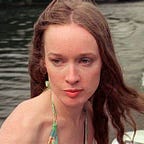“The Batman” Review
One of my main frustrations with the American superhero film landscape is the lack of cinematic language. Cinematic language is an amalgamation of visuals which tell a story words cannot. While I do not hate the majority of American superhero film releases, when I ask myself if I would lose anything if the story were purely text, I can’t find myself saying “yes”.Even when there is interesting cinematography or fun editing, it is steeped in utilitarian filmmaking, which favors stories over visuals, that it excludes analysis that goes outside of the basic narrative.While The Batman is a narrative-driven Hollywood film, its film noir influences open it up to a voyeurism that invites analysis.
Film noir is a genre of film that often centers crime, though its story elements are less important than its visual components. Said components are typically characterized by dark lighting, use of shadows, smokey alleys, and formal costumes. Each component is meant to highlight the anxiety on screen while also engaging the audience in gothic aesthetics. Film noir is not a dead genre by any means but it has faded in mainstream films in the last twenty years. The Batman revived it by centering the film in a gothic style with a voyeuristic camera.
The Batman follows Bruce Wayne (Robert Pattinson), the titular hero, as he uncovers a conspiracy of police corruption through a series of puzzles given to him by The Riddler (Paul Dano). He enlists the help of Detective James Gordon (Jeffrey Wright) and Selina Kyle, aka Catwoman (Zoe Kravitz) who lie on opposite sides of the spectrum of justice, leading Bruce to discover whether he will act upon vengeance or in the confines of the law.
The Batman is more concerned with being a detective story than being a superhero film. The noir atmosphere and shot composition is the primary reason this works on a visual level. The writing is decent. But I could see a version of this with a less visual director and cinematographer that would end up to be basic. Visual storytelling is the greatest tool of cinema. Sadly, it has been swept away in studio-based blockbusters, as the studios have taken away freedom from directors, even more than in recent decades. When you take away the creativity from the artist, you are left with visual mush which may give the audience the basics they need, but it ultimately leaves them empty. Visually-oriented films like The Batman gives the audience something more fulfilling to chew on.
The gothic aesthetics are melded perfectly with the themes of corruption amongst a sea of people. The characters are drowning in this stone-painted swamp, tying the conspiratorial nature of the plot to the visuals. Many have said that Gotham truly feels like a character instead of a basic city, as it does in the Nolan films. I attribute this not only to the incredible set design but because of the atmosphere created by the lighting and blocking of scenes. Every building and space the characters inhabit are detail-oriented. The performances themselves follow suit, making the aspects blend perfectly together, heightening the greater narrative. Nothing in the film can be recreated through a broad description. It must be seen to be believed.
